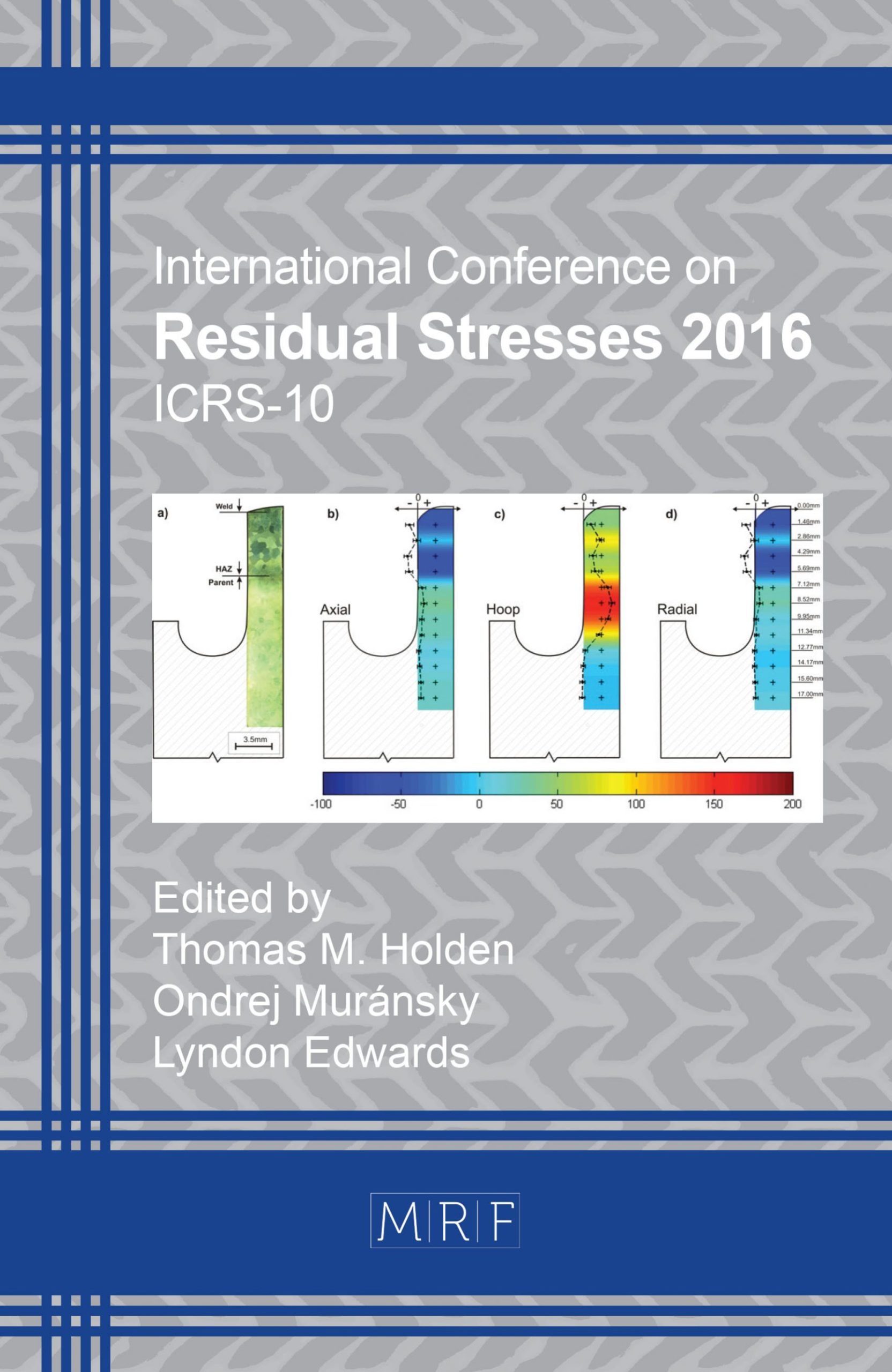Residual Stress Behavior in Hardened Shot Peened 42CrMo4 Specimens during Fatigue Load
D. Cseh, V. Mertinger, J. Lukacs
download PDFAbstract. The advantages of applied compressive residual stress on fatigue properties of materials is a well-described topic, but not in all respects. Compressive macro residual stresses in the surface region with medium and high hardness increase the fatigue life and the fatigue limit compared to materials that are free from designed compressive residual stresses because of their increased resistance against crack initiation and propagation. For this aim various surface compressing methods such as burnishing, shot peening, rolling have been developed. The monitoring of residual stress variation during fatigue is important. All properties, which exert lifetime, should be analyzed. The residual stress state of machine elements can change during application, therefore it is necessary to describe how these changes are related to the operational parameters. The surface residual stress state evolution of hardened (quenched and tempered)-and shot peened-42CrMo4 steel during fatigue tests was investigated nondestructively by X-ray diffraction. Four fatigue stress levels were applied. The residual stress state was recorded in shot peened state and monitored during the fatigue tests. The fatigue test was stopped after certain cycles until the specimens fractured. The stress state was measured after each fatigue test stops and the stress relaxation is given in the percentage of the initial stress state in function of cycle number.
Keywords
Fatigue, Residual Stress Relaxation, X-ray Diffraction
Published online 12/22/2016, 6 pages
Copyright © 2016 by the author(s)
Published under license by Materials Research Forum LLC., Millersville PA, USA
Citation: D. Cseh, V. Mertinger, J. Lukacs, ‘Residual Stress Behavior in Hardened Shot Peened 42CrMo4 Specimens during Fatigue Load’, Materials Research Proceedings, Vol. 2, pp 491-496, 2017
DOI: http://dx.doi.org/10.21741/9781945291173-83
The article was published as article 83 of the book Residual Stresses 2016
![]() Content from this work may be used under the terms of the Creative Commons Attribution 3.0 licence. Any further distribution of this work must maintain attribution to the author(s) and the title of the work, journal citation and DOI.
Content from this work may be used under the terms of the Creative Commons Attribution 3.0 licence. Any further distribution of this work must maintain attribution to the author(s) and the title of the work, journal citation and DOI.
References
[1] J. Davis, Surface hardening of steels, USA: ASM International, 2002.
[2] S. Timoshenko, History of strength of materials, Dover: Dover Publications, 1983.
[3] ASM International, Handbook of Residual Stress and Deformation of Steel, USA: 2002.
[4] R. I. Stephens, A. Fatemi, R. R. Stephens és H. O. Fuchs, Metal fatigue in Engineering 2nd Edition, USA: John Wiley & Sons, 2001.
[5] E. Macherauch és V. Hauk, Residual stress in Scinence Technology Vol 2, Németország: I.R. Publications, 1987.
[6] K. Dalaeia, B. Karlssona és L.-E. Svenssona, „Stability of shot peening induced residual stresses and their influence on fatigue lifetime,” Mat. Science and Engineering A, pp. 1008-1015, 2010.
[7] J.-C. Kim, S.-K. Cheong és H. Nog, „Residual stress relaxation and low- and high-cycle fatigue behavior of shot-peened medium-carbon steel,” International Journal of Fatigue, pp. 114-122, 2013. http://dx.doi.org/10.1016/j.ijfatigue.2013.07.001
[8] J.-C. Kim, S.-K. Cheong és H. Nog, „Proposed fatigue damage measurement parameter for shot-peened carbon steel…” International Journal of Fatigue, pp. 97-106, 2014.
[9] I. Nikitin és M. Besel, „Correlation between residual stress and plastic strain amplitude during low cycle fatigue of mechanically surface treated austenitic stainless steel AISI 304 and ferritic–pearlitic steel SAE 1045,” Materials Science and Engineering A, pp. 297-303, 2008.
[10] D. Cseh, V. Mertinger és J. Lukács, „Residual Stress Evolution During Fatigue Test of a Shoot Peened Steel Sample,” Materials Science Forum , pp. Vol. 752 95-104, 2013.
[11] ASM International, Cast Irons ASM Specialty Handbbok, USA: ASM International, 1996.
[12] ASM International, Heat treating ASM Handbook Vol. 4,, USA: ASM International, 1991.
[13] R. Haimbaugh, Induction Heat Treating, USA: ASM International, 2001
































